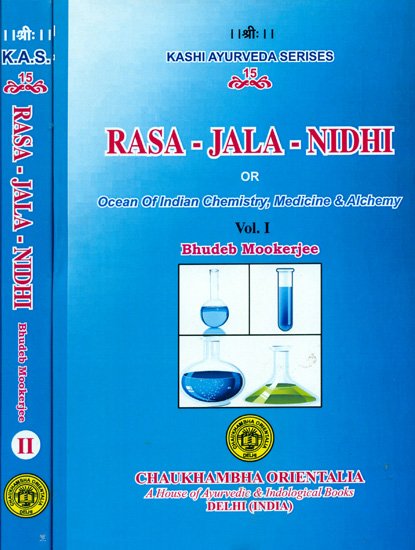Rasa Jala Nidhi, vol 4: Iatrochemistry
by Bhudeb Mookerjee | 1938 | 52,258 words | ISBN-10: 8170305829 | ISBN-13: 9788170305828
This fourth volume of the Rasa-jala-nidhi deals with Rasa-chikitsa-vidya, also known a the science of Iatrchemistry (chemical medicine), a major branch of Ayurveda. It contains Ayurvedic treatments for Fever and Diarrhea. The Rasa-jala-nidhi (“the ocean of Iatrochemistry, or, chemical medicine) is a compendium of Sanskrit verses dealing with ancie...
Part 13 - Chewing of betel leaves
A betel leaf is to be chewn after each meal. It should be accompanied with a few bits of betel-nut, a little of catechu, lime, dhanya (coriandrum sativum), and madhurika (foeniculum vulgare). All these, combined, destroy the three doshas, cause cheerfulness of the mind, cleanliness, and make the mouth clean, sweet-smelling, soft, and wet. Betel-leaves, in the above way, should be chewn at the time of sexual intercourse, after waking, hath, meal, vomiting; after some artificial poison (such as nails, hair) finds its way into the stomach, and at a meeting of the learned men, and at a royal court. The stem and the end of a betel leaf gives rise to diseases, the middle part (i.e., the thick vein-like substance) destroys longevity, and the veins spreading right and left destroy intelligence. Betel-leaves, therefore, should be deprived of those objectionable parts, before they are chewed. The first part of the juice coming out of a chewn betel leaf is injurious and should therefore be thrown out of the mouth, the second part of the juice is heavy and laxative, and the third part of the same is nectar-like and helps to remove diseases and senility.
Betel leaves should not be taken in excess (i.e., more than three or four times a day). They should be avoided by those who have taken purgative and those who are hungry. Taking betel leaves in excess impairs the physique, physical strength, colour of the skin, eye-sight, strength of the hair, teeth, ears, and the digestive power. It causes waste of the body, an excess of pitta, vayu, and blood tending to rakta-pitta or hemeptosis. Betel leaves are injurious to those who suffer from diseases affecting the teeth and the eyes, those who have been infected with poison, those who suffer from hysteria or epilepsy, those who suffer from the re-action of drinking liquor in excess, and those who have got consumption and hemeptosis.
Conclusion:
 This concludes ‘Chewing of betel leaves’ included in Bhudeb Mookerjee Rasa Jala Nidhi, vol 4: Initiation, Mercury and Laboratory. The text includes treatments, recipes and remedies and is categorised as Rasa Shastra: an important branch of Ayurveda that specialises in medicinal/ herbal chemistry, alchemy and mineralogy, for the purpose of prolonging and preserving life.
This concludes ‘Chewing of betel leaves’ included in Bhudeb Mookerjee Rasa Jala Nidhi, vol 4: Initiation, Mercury and Laboratory. The text includes treatments, recipes and remedies and is categorised as Rasa Shastra: an important branch of Ayurveda that specialises in medicinal/ herbal chemistry, alchemy and mineralogy, for the purpose of prolonging and preserving life.
